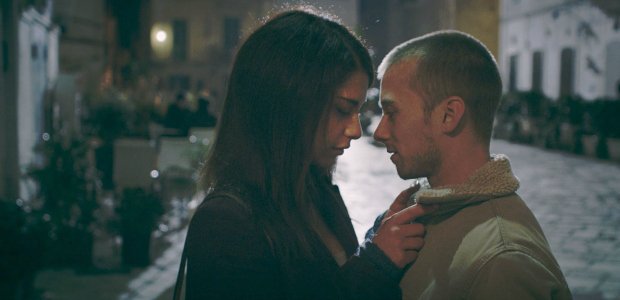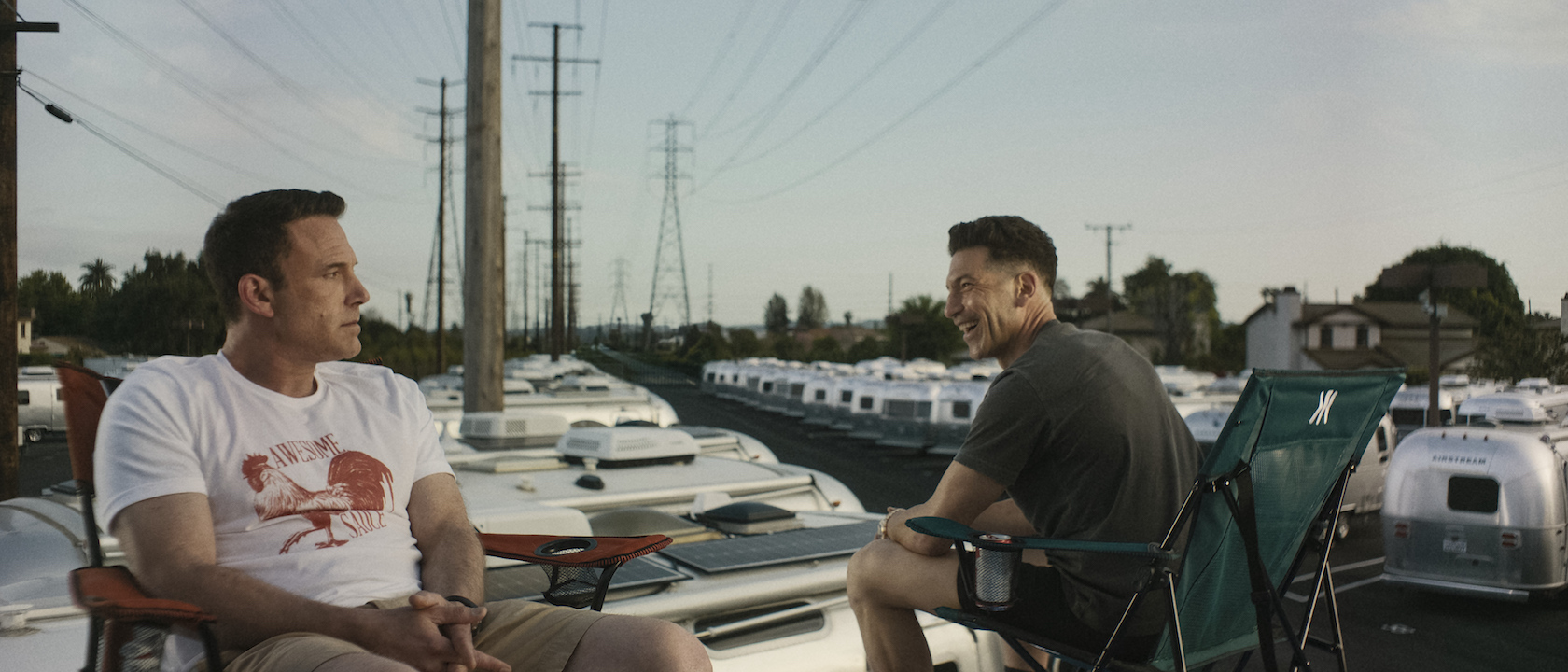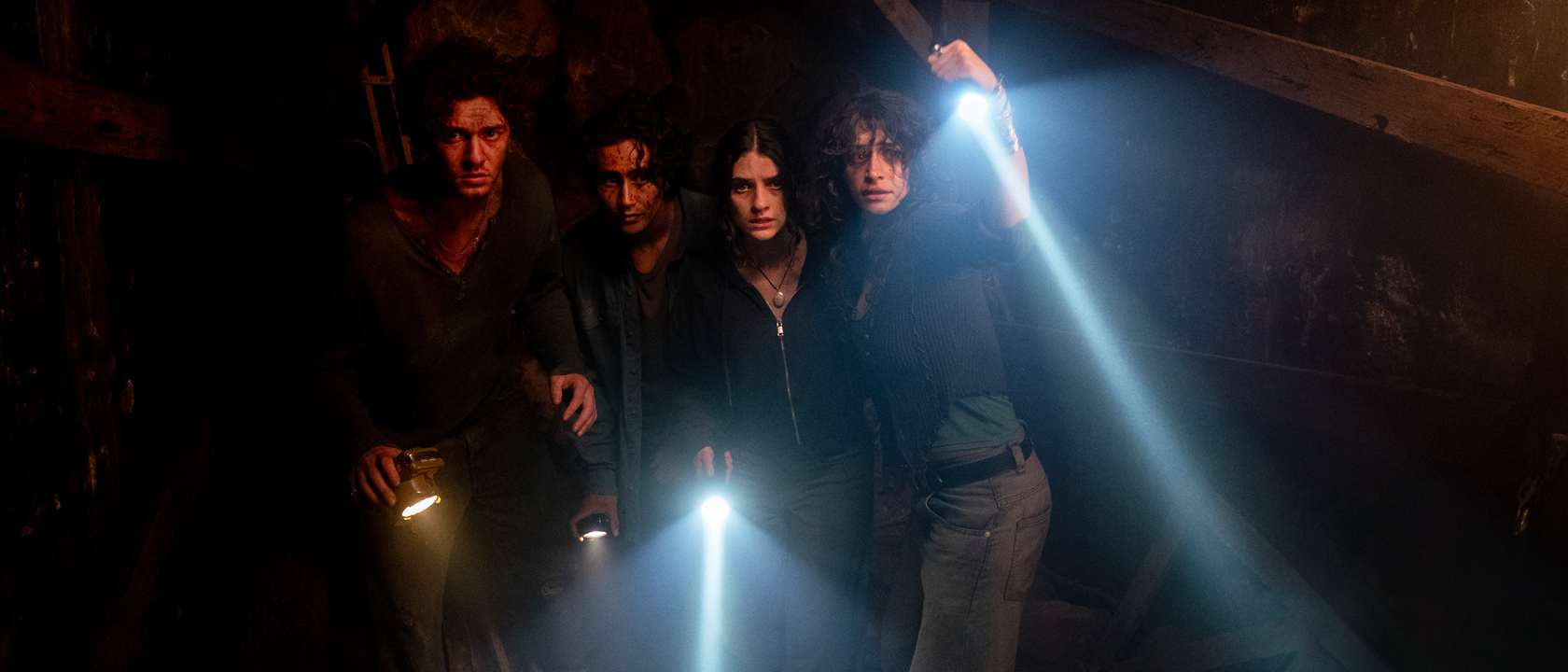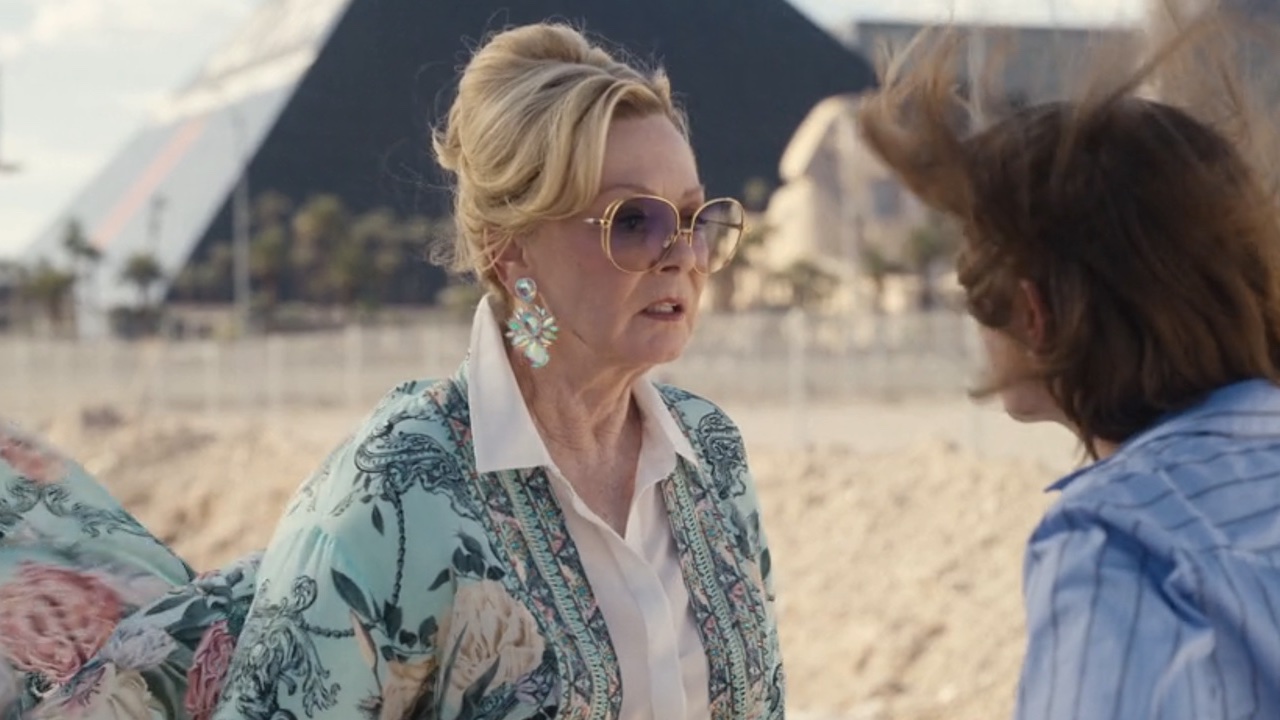Spring is a difficult film to unpack. Co-directors Justin Benson and Aaron Moorhead hide a serious left turn in their “Italian Vacation” drama, and when it arrives, it’s the type of rug pull that changes most of what you have just watched. But they take a long time to start hinting at the ultimate destination waiting for audiences with Spring, so I don’t feel it’s fair to lay too much on the table, even if you think you know where the movie's going.
The best way I can describe Spring is by calling it a monster-movie version of Richard Linklater’s Before Sunrise. On a European bustle, aimless vagabond American tourist Evan (Lou Taylor Pucci) falls for a gorgeous Italian local, Louise (Nadia Hilker). As the two get to know each other, they engage in long, meandering conversations about love, life, history, culture, her past and his future. During the day, Evan takes a job farming on a local plot of land. He spends his evenings on good food and cheap wine under full moonlight with his new crush. Without its twist, Spring could pass as a docu-style indie relationship study that sells itself on the conversational skills of its relatable leads.
But there’s a twist, and it catapults Spring into a whole different genre.
We’re far enough into this review that I can start droppings important reveals. Louise is … well, she’s a monster. At first, it’s implied that she’s a vampire. Then, a werewolf. Then, a sea creature with scales and a serpentine tail. Spring is enjoying some pre-release buzz from early film-festival screenings, and in running parallel with It Follows as the buzzworthy horror film to catch. What I find interesting about the two films, compared, is how they treat the mythology of their threats. With It Follows, we learn nothing about the entity that pursues our pretty lead character. With Spring, we’re fed too much, and it took me out of the story.
There’s a real charge to Spring, once the monster angle kicks in, where we scour the clues to find out what Louise is – and wonder what will happen when Evan finds out. He is falling in love with this girl, and Pucci seems capable of selling the young man’s heartbreak, when it arrives. Once Louise prepares to explain her “condition,” though, the movie loses its allure. Hilker is given a long, convoluted soliloquy hashing out the goal of her creature, and the curse she has endured for centuries. But it didn’t make much sense in context, and Evan accepts it with such a shrug that Spring went from terrifying to comedic and silly in a few awkward steps.
What can’t be denied, however, is the outstanding bit of monster-movie make up performed by the Spring team once they are able to show off Louise’s transformations. Their work harkens back to the creature-lab concoctions of John Carpenter and David Cronenberg’s cinematic creations, and the fun they have morphing Louise is a sight. Spring might not have a fulfilling destination once its central mystery has been resolved. The relationship drama sputters to a stop instead of sticking its landing. But it hides a few small joys for monster-movie fanatics looking for a throwback thrill.
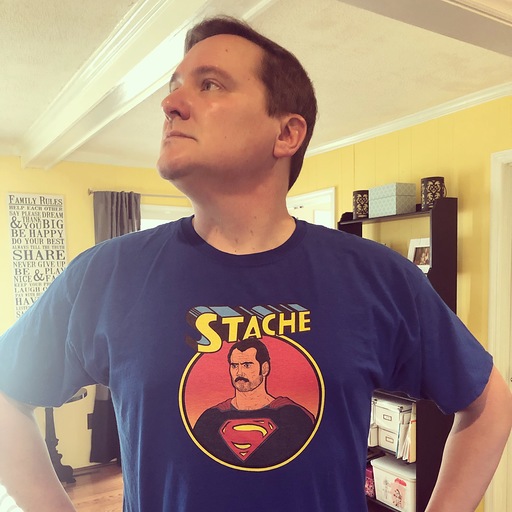
Sean O’Connell is a journalist and CinemaBlend’s Managing Editor. Having been with the site since 2011, Sean interviewed myriad directors, actors and producers, and created ReelBlend, which he proudly cohosts with Jake Hamilton and Kevin McCarthy. And he's the author of RELEASE THE SNYDER CUT, the Spider-Man history book WITH GREAT POWER, and an upcoming book about Bruce Willis.
